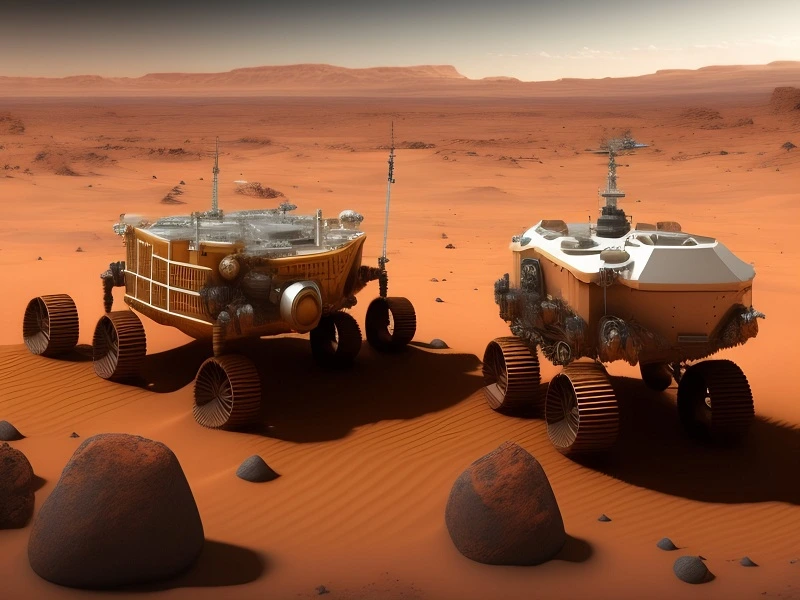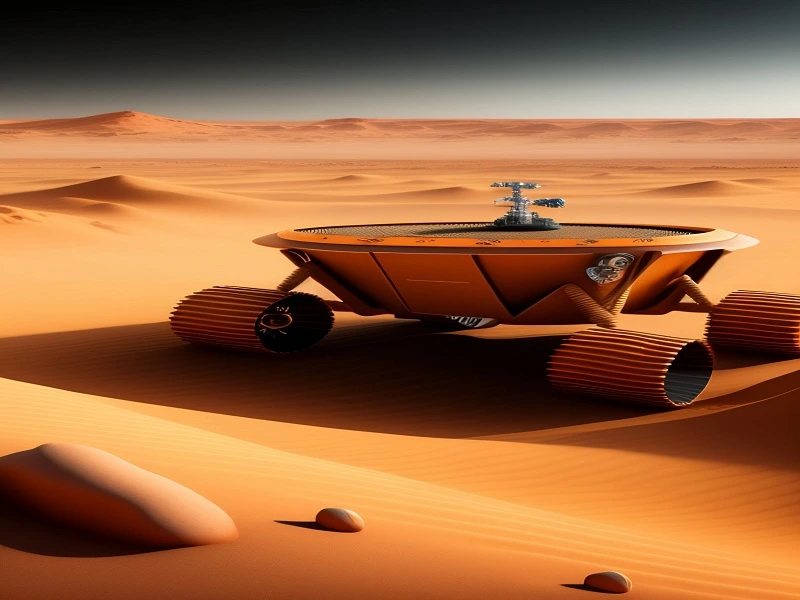Introduction:
Space exploration has always captured the imagination of humanity, with planets like Mars serving as a focal point for scientific inquiry and potential colonization. Recent milestones, such as successful Mars rover missions, have reinvigorated interest in exploring the Red Planet and venturing further into the cosmos. This article delves into the world of Martian exploration, the challenges and triumphs of past missions, and the exciting possibilities of future endeavors that may lead us to the stars.

The Red Planet: Mars
Mars, often referred to as the “Red Planet,” has long been a source of fascination for astronomers and scientists. As the fourth planet from the Sun, Mars shares some similarities with Earth, making it an enticing target for exploration. Its thin atmosphere and rusty-colored surface add to the intrigue. Despite its relatively inhospitable conditions, Mars has been a subject of scientific missions due to its potential for harboring signs of past or present life and its potential as a future human settlement.
Past Mars Missions
In the past, numerous missions have been sent to Mars to unravel its mysteries. From the Viking missions in the 1970s to the Spirit and Opportunity rovers in the early 2000s, each expedition has provided valuable insights into the planet’s geology, weather patterns, and historical climate changes. These missions have paved the way for future exploration and have laid the groundwork for more ambitious endeavors.
Rovers on Mars
One of the most remarkable achievements in Martian exploration is the use of rovers. Rovers like Curiosity and Perseverance have proven to be invaluable tools, capable of traversing the Martian terrain, analyzing soil and rock samples, and transmitting crucial data back to Earth. These robotic explorers have significantly extended our understanding of the planet and its potential habitability.
Challenges of Martian Travel
While rovers have been a major success, sending humans to Mars presents an entirely different set of challenges. Long-duration space travel exposes astronauts to high levels of radiation, and ensuring a self-sustaining life support system remains a complex problem. Scientists and engineers are diligently researching solutions to address these obstacles and make human missions to Mars a reality.
Future Mars Missions
The future of Martian exploration is brimming with exciting possibilities. The Artemis program, led by NASA, aims to return astronauts to the Moon as a stepping stone to Mars. Additionally, private companies like SpaceX are actively working on interplanetary travel, proposing ambitious plans for colonizing the Red Planet within the next few decades.
Colonizing Mars
The idea of colonizing Mars has captured the public’s imagination, but it is not without ethical and practical considerations. Establishing human settlements on Mars raises questions about our responsibility to protect its environment and the potential impact of introducing Earth organisms to another planet. If successful, Martian colonies could serve as a backup for humanity and open new avenues for space exploration.
Beyond Mars: Interstellar Travel
As we venture further into space, the dream of interstellar travel becomes a tantalizing prospect. Projects like Breakthrough Starshot propose using laser-driven nanocraft to reach nearby star systems, potentially reaching speeds of a significant fraction of the speed of light. While interstellar travel remains a long-term goal, such initiatives highlight the determination to push the boundaries of space exploration.
The Search for Extraterrestrial Life
The quest for extraterrestrial life has been a driving force behind space exploration. Researchers are exploring the possibilities of life existing in extreme environments, known as extremophiles. Mars, with its history of water, remains a prime candidate for microbial life, but the search extends beyond our neighboring planet. Future missions and advancements in astrobiology hold the promise of discovering life beyond Earth.
Space Mining and Resources
The exploration of celestial bodies like Mars not only helps us understand the universe but also provides opportunities for resource utilization. Space mining holds the potential to extract valuable resources like water and minerals from other planets and asteroids, supporting future missions and even enabling in-space manufacturing.

Technological Advancements
Space exploration drives technological advancements that benefit our lives on Earth. Innovations developed for space missions often find applications in various industries, such as medicine, communication, and transportation. These spin-off technologies have a far-reaching impact on society, making space exploration an investment that yields substantial returns.
The Role of AI and Robotics
Artificial intelligence and robotics play a crucial role in space exploration, assisting in autonomous operations and data analysis. Rovers and landers equipped with AI can make independent decisions, explore challenging terrain, and collect valuable data without direct human intervention. Furthermore, AI is essential in planning and executing future missions and may prove vital in terraforming efforts to make inhospitable planets habitable.
International Cooperation in Space Exploration
Space exploration has transcended national borders, becoming a collaborative effort involving multiple countries and space agencies. International cooperation enhances the efficiency and success of missions, fosters global knowledge-sharing, and promotes peace and understanding among nations. Working together, humanity can achieve more ambitious goals in space exploration.
The Importance of Public Engagement
Public interest and engagement are vital to sustaining space exploration efforts. Captivating missions like Mars rovers and the promise of interplanetary travel inspire the next generation of scientists, engineers, and explorers. Continuous public support is necessary to secure funding for future missions and ensure humanity’s ongoing presence in space.
Conclusion
Navigating Mars and beyond represents an unprecedented voyage of human exploration. With remarkable achievements like Mars rover missions and ambitious future plans, we are on the cusp of remarkable discoveries and achievements. The collective curiosity and dedication of scientists, engineers, and space enthusiasts around the world continue to drive our journey into the cosmos. As we explore the Red Planet and reach for the stars, we ignite the spirit of adventure and open doors to a future where the boundaries of human knowledge and exploration know no limits.
FAQs:
- Could humans survive on Mars without protective suits?
- While Mars has a thin atmosphere, it lacks sufficient oxygen for humans to breathe without protective suits. Additionally, the planet’s surface is exposed to harmful radiation, making suits and life support systems essential for human survival.
- Are there any plans to terraform Mars to make it more habitable?
- Yes, researchers are exploring the concept of terraforming Mars to make it more hospitable to human life. Ideas include releasing greenhouse gases to thicken the atmosphere and increase surface temperatures, creating liquid water, and establishing a stable environment over time.
- What is the significance of the Artemis program in the context of Mars exploration?
- The Artemis program aims to return humans to the Moon, which could serve as a testing ground for technologies and strategies relevant to future Mars missions. It will provide valuable experience and insights into long-duration space travel beyond Earth’s orbit.
- Can space mining on Mars be profitable?
- Space mining on Mars has the potential to be profitable, especially when considering the availability of valuable resources like water, which can be used for life support and fuel production. However, the economic feasibility depends on the cost of transportation and extraction methods.
- How do rovers like Curiosity and Perseverance navigate on Mars?
- Rovers use a combination of sensors, cameras, and autonomous navigation algorithms to navigate the Martian terrain. They analyze the landscape, plan paths, and make real-time adjustments to avoid obstacles and hazards while exploring the surface.

